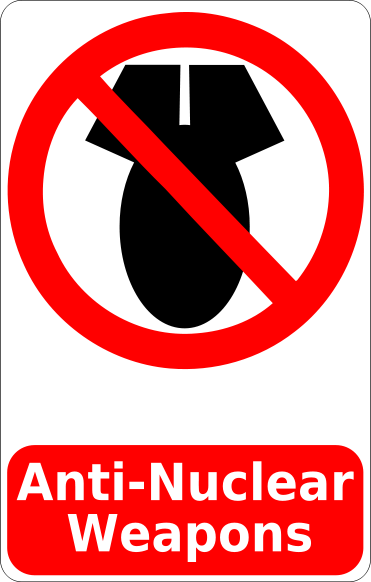There are two major intertwined streams that are the basis of the Atomic age; nuclear power and nuclear weapons. They were born together in the early 1940s in the midst of war. Nuclear weapons helped to end World War II in the Pacific. During the Cold War, the race to build and deploy nuclear weapons on both sides of the Iron Curtain terrified the world in the 1950s. At the same time, commercial nuclear power reactors were built in Russia, England and the United States to utilize the vast potential locked in the uranium atom and demonstrate that nuclear chain reactions could have an important peaceful application.
Reacting to the horror and devastation of the nuclear bombs dropped on Japan and the growing arsenals of nuclear weapons, major protests against nuclear weapons began with the Campaign for Nuclear Disarmament’s first Aldermaston March in England in 1958, the Women Strike for Peace marches in sixty U.S. cities in 1961 and the Australian Peace Marches in 1964. While nuclear weapons could be deployed against military targets, their enormous destructive power was a threat to major population centers. Millions of civilians could be killed and huge areas rendered uninhabitable by nuclear war. The major strategy of the time relied on the fear of such devastation to both sides in a nuclear war was called mutually assured destruction or MAD.
Nuclear power held great promise but there were concerns that its implementation would not be as free from problems as had been promised. Issues with uranium mining, reactor safety and the disposal of nuclear waste sparked a backlash against all the positive advertising by governments and industry. These concerns prompted major protests against nuclear power in France and Germany in 1971. Hundreds of thousands of people marched against nuclear power in France and Germany during the late 1970s. The U.S. Three Mile Island accident in 1979 and the U.S.S.R. Chernobyl accident in 1986 each spurred huge protests against nuclear power by proving that the concerns of the nuclear power critics were valid.
During the 1970s, there were movements in the direction of winding down the tensions of the Cold War and reducing the nuclear weapons inventories. Unfortunately, with the election of the belligerent anti-communist Ronald Reagan, the Cold War thaw disappeared and once again the threat of nuclear rose to terrify the world. Arsenals were expanded and insane talk of a winnable nuclear war emanated from Washington, D.C. In reaction, anti-nuclear protests spread across the world once again. There was some work on nuclear disarmament during the Reagan Presidency which continues up to the present. However, massive protests still occur demanding the total elimination of nuclear weapons.
The Japanese Fukushima accident in 2011 resulted in massive protests against nuclear power generation worldwide. The Unit 4 reactor at Fukushima was severely damaged and a pool full of nuclear fuel rods may collapse and burn at any time which would threaten the entire northern hemisphere and our global civilization. Despite continued support by some governments and huge lobbying and advertising efforts on the part of the nuclear industry, worldwide support for the use of nuclear energy for weapons and power generation is waning and the Atomic Age may be drawing to a close.
